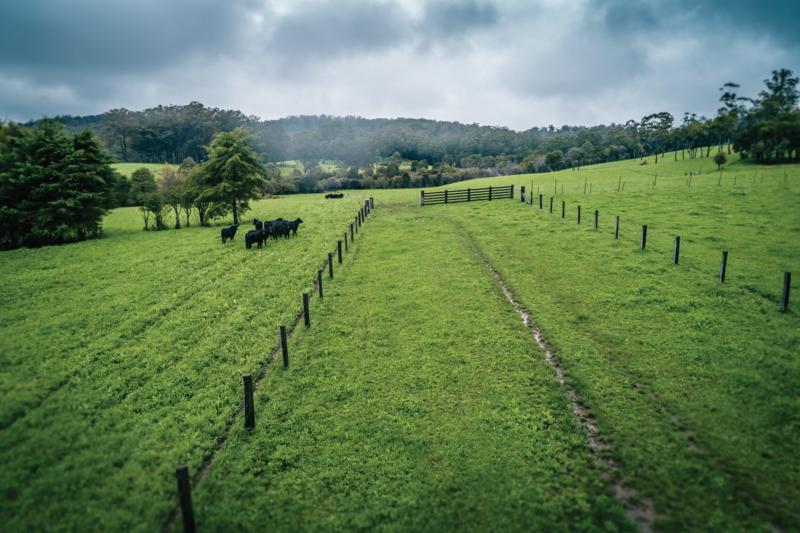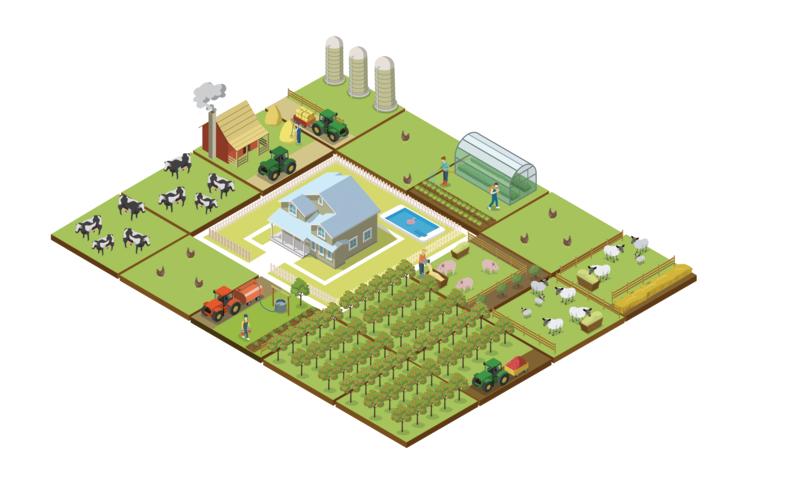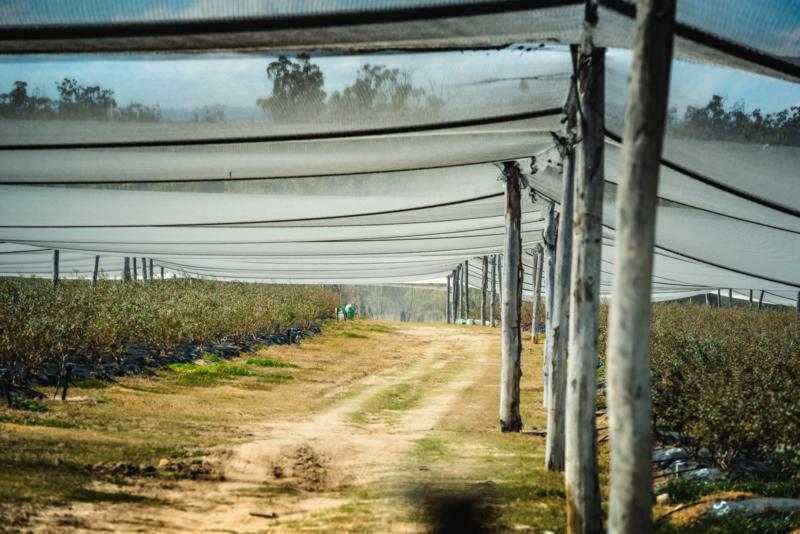THE letter came in the post just like any other – but it caused heartbreaking fallout for one NSW farming family. Maitland City Council wrote to a farmer concerning complaints about “offensive” odours from his beef farming operation.
New neighbours had objected to the council about the smell of the vegetable and fruit scraps being fed to cattle during a flood, so the council told the farmer to refrigerate the scraps before feeding, which the farmer found impractical. The council warned it would issue a prevention notice and potentially fines of up to $250,000.
The farmer stopped feeding scraps to the cattle, but the new neighbour then complained about the smell of cattle manure. The farmer could not afford the high cost of assistance for a legal challenge and was forced to cease the beef farming enterprise.
It’s a problem being repeated across the state. A new person moves to a rural area for its country charm knowing that it’s a farming community, but within weeks is complaining about odours or tractor noise or the “visual pollution” from white netting covering horticulture crops.
As Australia’s population increases, there is a growing need for farmers to produce more food. But productive farmland is being eaten up by the urban sprawl, which is creating right-to-farm issues as people wanting lifestyle blocks move into traditional agricultural areas.
 Cattle grazing on a farm near Coffs Harbour, where the Moran family have had difficulties around their right to farm.
Cattle grazing on a farm near Coffs Harbour, where the Moran family have had difficulties around their right to farm.
According to the NSW Department of Primary Industries (DPI), the concept of right to farm has multiple facets, but the common interpretation relates to a desire by farmers to undertake lawful agricultural practices without conflict or interference arising from complaints from neighbours and other land users.
While NSW has a right-to-farm policy developed by the state government, the only Australian state with right-to-farm legislation is Tasmania. Here, the law aims to ensure that the arrival of new, usually non-farming neighbours in rural areas does not result in the everyday activities of nearby farms being impeded or stopped.
In the United States and Canada, right-to-farm laws were developed in the 1970s against a backdrop of concern about the loss of agricultural land and conflict resulting from increasing urban encroachment. The US-based Farm Foundation, a non-profit agribusiness researcher, found that people not involved in farming were beginning to move into traditional agricultural areas, bringing with them new complaints about the way the work was carried out. Complaints included issues about odour, flies, dust, noise, spraying of farm chemicals and slow-moving farm machinery.
He believes there needs to be better understanding that farming comes with a “series of requirements”. The NSW government’s right-to-farm policy – which isn’t legislated – says it recognises the value of agriculture for growing food and fibre for domestic and international markets, and is concerned about the potential loss or impaired use of agricultural land. The policy aims to reinforce rights and responsibilities, conduct ongoing monitoring and evaluation of land-use conflicts, strengthen land-use planning and improve education and awareness.
“People who want to live in rural and agriculture areas need to understand that land is used for productive purposes,” the policy states. “The reality is that normal farming practices can have impacts on neighbours ranging from residual noise, light, dust and other impacts.”
 Complaints from new neighbours are affecting farmers’ livelihoods.
Complaints from new neighbours are affecting farmers’ livelihoods.
According to the policy, “the NSW government supports primary producers in their right to farm to the extent of what is lawful” – and NSW Minister for Primary Industries Niall Blair backs up this sentiment. “Farmers in NSW are sustainable and responsible,” the Minister says. “We want to encourage land-use acceptance and support, not land-use conflict.”
Since introducing the right-to-farm policy in 2015, he says his department has been gathering data on the issues and number of complaints and is continuing to look at options such as legislation and planning. However, the Minister says he isn’t convinced legislation is the way to go. “I think we still need to do more work, as well as trying to advocate the importance of the agriculture sector. I’d hate to wake up one day and find we’ve got lots of nice lifestyle blocks and no dairy farms left. I don’t want us importing produce because of land-use conflict.”
He says one example of how issues can be resolved is the code of practice developed for the increasing number of North Coast blueberry farmers. “A change in commodity does have visual and physical changes to the landscape, so it [the code of practice] was a good opportunity to educate farmers moving into a new commodity and take the community along with them.”
While blueberries have been grown in the Coffs Harbour area for over 30 years, there has been a recent explosion in the number of farms and a lot of investment. The blueberry industry in the area is now worth an estimated $200 million a year. This has caused a lot of concern in the community, and attempts have been made to force farmers to submit development applications when they want to set up new plantations. Local NSW Farmers branches successfully lobbied to defeat such attempts at Coffs Harbour City Council and Nambucca Shire Council meetings in 2017.
 Nets over blueberries are a common source of complaints from neighbours.
Nets over blueberries are a common source of complaints from neighbours.
Other solutions have been sought by Kiama Council. The area has been under huge pressure from urban encroachment as Sydneysiders look south for cheaper housing. In a bid to manage this, the council is introducing cheaper rates for farmers and has put a limit on developments in rural areas.
CLASHES OVER FARMING LAND CAUSE STRESS
Ian Sinclair, a planning expert who is investigating the tensions of land-use planning on the eastern seaboard of Australia in a PhD at the University of Sydney, says zoning farmland as agricultural land isn’t the answer. An ideal solution, he says, would be a suite of measures such as land-use planning, a strengthened policy approach and offers of incentives or rate cuts to farmers to stay as land prices increase. “From a local government perspective, complaints about land use take up a lot of time,” Ian says. He believes regulators should let the “farmers farm” as long as they are carrying out best practice.
In the case of pollution laws, where a landowner should not allow odour, noise or dust to cross their property boundary, Ian says these are written for the urban population. Noise barriers and odour scrubbers can be used in an urban setting, but on a farm odour and noise can follow the topography of the land and be detected kilometres away.
“A lot of the time these complaints are treated like those in an urban environment, but the farmer rightly gets angry.” Ian adds that land-use conflict can take up an inordinate amount of time and cause stress. There have also been issues with vandalism and nasty behaviour.
“There are stories of people living on the edge of Sydney around Camden and they think it would be nice to live there, then they buy a house and move in down the road from a poultry farm, but then reality hits and there might be odour or dust. There is a lack of understanding. There needs to be a realisation that it’s not just farmland, it’s a food production place.”
Complaints occur very regularly in some areas. The recent Right to Farm Agricultural Land Use Survey, conducted by the University of Technology Sydney and the NSW Department of Primary Industries, investigated the type and extent of agricultural land-use conflict across NSW.
Of the 58 councils that responded, 80% reported that they had received complaints about agricultural land use.
Complaints relating to legally compliant agricultural activity made up a considerable proportion of issues raised with the councils. Two-thirds of the councils surveyed also stated that a lack of understanding by new residents was the driving force behind land-use conflicts in their area. “I think a different attitude would be taken if both sides knew more about each other’s issues,” says Ian.
COFFS HARBOUR FAMILY SPEAKS OUT ON RIGHT-TO-FARM
 The Moran Family - from left: Jayne Moran, with dog Abbey, Andrew Moran, Ashleigh Moran, mill workers Brian Wolter, Mitchell Norris and Peter von Saldern, and Lochlann Moran, with dog Banjo.
The Moran Family - from left: Jayne Moran, with dog Abbey, Andrew Moran, Ashleigh Moran, mill workers Brian Wolter, Mitchell Norris and Peter von Saldern, and Lochlann Moran, with dog Banjo.
Jayne and Andrew Moran and their family run mostly Hereford and Angus cattle on four properties about 10-15km from each other at Lowanna, 35km west of Coffs Harbour.
One of the properties also hosts a sawmill which employs six-to-eight people. “It’s not a glamorous or sexy job,” says Jayne. “Andrew started in the dirt 30 years ago and has invested in cement, a shed – this is our livelihood.”
But that sawmill and farm is put at risk by red tape, and critics complaining of people trespassing on their land. Issues they’ve encountered include people coming onto their property to take firewood, or calling the fire brigade when they light a fire.
The farming family, which includes the couple’s daughter Ashleigh and son Lochlann, has installed CCTV cameras now to help protect the business. Says Jayne, “It’s just too stressful for Andrew to even go near some of our boundaries. We’ve had fallen trees over the fenceline, burnouts on our property, garbage thrown at our door.”
There are also the issues around some local lifestyle owners not understanding property boundaries. Jayne says they’ve had people failing to help pay to fix fences, locals riding motorbikes in her family’s paddocks and small dogs chasing their cattle.
The mill operates from 7am to 4pm to lessen noise for neighbouring properties. On average, the team cuts half a semi load of timber per day.
The Morans have built a sustainable operation with dual sources of income (livestock and trees for milling) that they believe is critical in this unpredictable climate. “There is not one farmer up here that solely relies on one income,” Jayne says. They’re also fighting a council push to introduce development applications for broadscale farming.
“Councils are not respecting our right to farm, they are restricting us. It is our land that we have paid for and we are looking after,” Jayne says. She believes there should be a guide written and issued with the contract when a property is for sale, which details information for small-lot buyers regarding the rights farms have to operate.
RIGHT-TO-FARM CASE STUDIES
By: Michael Burt
THE BLUEBERRY FARMER
 The burgeoning blueberry industry has faced a number of right-to-farm challenges.
The burgeoning blueberry industry has faced a number of right-to-farm challenges.
A blueberry grower in the Lismore area adopted the use of a gas-powered bird scare gun in 2017 to protect a new crop of blueberries while he saved the capital to invest in netting infrastructure. The grower placed the gun as far as possible from residential neighbours and timed the scare noises to minimise noise disturbance. Neighbours complained and the council requested the adoption of a noise management plan. There are no guidelines for the use of gas scare guns for bird control in NSW, so the council referred the grower to the South Australian Environmental Protection Authority guidelines, which he adopted. Neighbours continued to complain and the grower was issued with a $4,000 fine for not submitting a sufficient noise management plan. The burgeoning blueberry industry has faced a number of right-to-farm challenges including complaints about the aesthetics of white netting and the legitimate purchase of existing water licences.
THE SUCCESS STORY
 Hunter Valley farmer Wendy Bowman.
Hunter Valley farmer Wendy Bowman.
Wendy Bowman almost lost her farm in the Hunter Valley, due to compulsory aquisition. In 2010, Chinese-owned mining company Yancoal proposed to extend an open-cut mine, which would have impacted Wendy's 182 hectares of grazing land in Camberwell. As one of the few landowners left in the area, Wendy became the key complainant in a public interest lawsuit to fight the expansion.
After a four-year legal battle, the Land and Environment Court declared in 2014 that the mine expansion could proceed only if Wendy would sell her land. It found the mining company could not compulsorily acquire her land, and Wendy said she would not sell to the company. She received the international Goldman Environmental Prize in 2017 for grassroots advocacy in support of farming communities in the Hunter Valley.
THE MACADAMIA FARMER
 Macadamia farmers in Byron Bay are having difficulties with a surge in tourism. Source: Getty Images.
Macadamia farmers in Byron Bay are having difficulties with a surge in tourism. Source: Getty Images.
Weddings, parties and a new popular function centre and restaurant have impacted on routine farming activities for a farming family in the Byron Shire. The farmers have produced beef and macadamias for four generations, but are now facing increasing pressure from more than 500,000 annual visitors to a tourist facility on a neighbouring property. Visitors often wander onto the property to take photos, including wedding shoots, without permission, posing a biosecurity threat to the quality assurance requirements for macadamias. The farmers have had to adjust their orchard management program to reduce noise disturbance and have lost their “quiet farmland” amenity. The Byron Shire is seeking to make planning amendments to take advantage of a booming wedding industry on rural land and has taken feedback from the farming community on right-to-farm concerns.
NSW councils where right-to-farm complaints are hot
- Port Macquarie-Hastings
Cattle grazing, meat production, poultry, piggeries, greenhouse horticulture, nurseries
- Coffs Harbour
Greenhouse horticulture, blueberry growing
- Camden
Cattle grazing, meat production, poultry, market gardens, greenhouse horticulture, vegetables, nurseries, horse studs
- Yass Valley
Vegetables, vineyards
- Bega Valley
Cattle grazing, meat production, poultry, piggeries
- Bathurst
Broadacre cropping
Source: NSW Department of Primary Industries. (2017)